Thiers and La Vallée
des Rouets
Ruth Andrews
Photos by Keith and Ruth Andrews
|
|
The most satisfying visit of our first week in
France was prompted by a leaflet in the gîte where
we were staying for a walk along La Vallée des
Rouets at Thiers, a medieval town near Clermont
Ferrand, famous for its cutlery and paper-making.
We only discovered the rest of the town after we had
failed to buy a ticket for a guided tour to the last
mill still in use in the valley. We realised that
there was also a cutlery museum, a town trail, and a
walk through the Vallée des Usines (factories)
alongside the river Durolle.
Thiers has masses of fast-flowing water
(particularly on our visit following a thunderstorm
the night before) and plenty of timber for charcoal,
but no metal ore or sandstone, so it is unclear why
it became France’s chief centre for edge tool
manufacture. However, from the 14th century the
lower parts of the town were involved in tanning,
textiles, and paper making, as well as knife making,
a process which was only industrialised in the
mid-19th century. As the town grew and its
factories spread on to new sites, the original
warren of medieval stone-built residential workshops
and storage facilities remained undisturbed.
|
 |
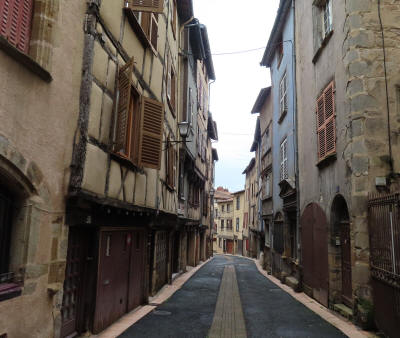 |
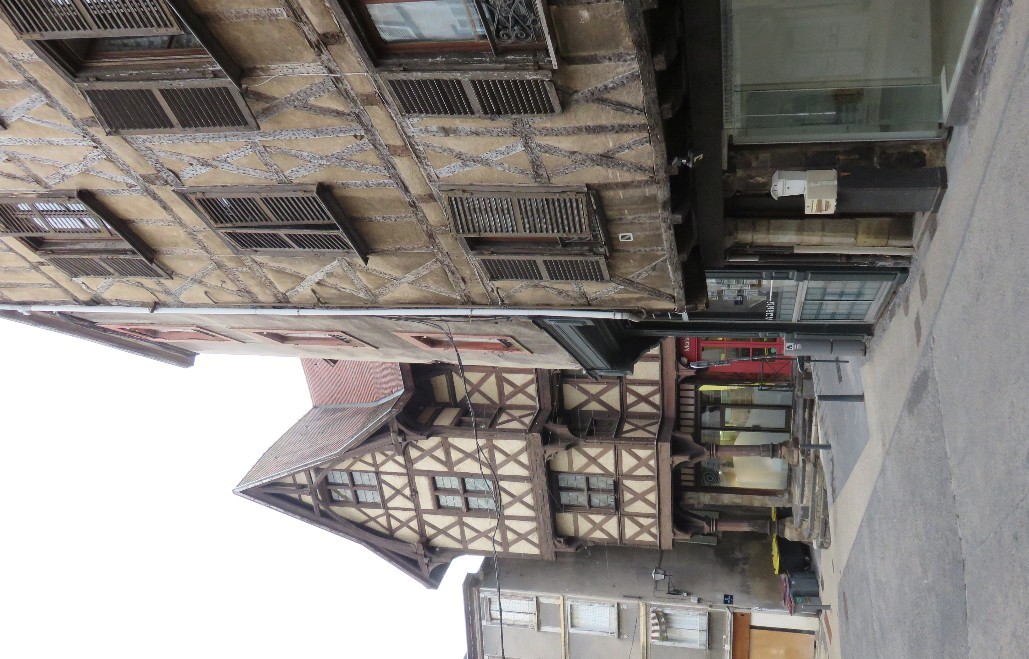 |

It is now a conservation area, and two of the
cutlery craftsmen’s shops have become an informative
museum. We were given lots of information and
assured that the
Vallée des Rouets
was an open site with free access, so we set out to
explore.
|
|
A very steep and rocky footpath led down to an
overgrown part of the riverbank several miles
upstream from the town. A
rouet is a small stone-built workshop or mill where
knives and similar edge tools were sharpened using a
rotating grindstone powered by a vertical
waterwheel. The émouleur (knife-grinder) would lie
face down on a plank above the revolving grindstone,
with his dog lying on his legs to keep him warm.
|
|
We explored 10 of these sites, only one being a
recognisable building, Chez Lyonnet (right).
M Lyonnet was the last
émouleur,
working until 1976. All the rouets had a narrow
undershot metal wheel with curved metal paddles. I
am a bit suspicious that they looked in quite good
condition while the stone sheds themselves had been
almost completely absorbed back into the
undergrowth. |
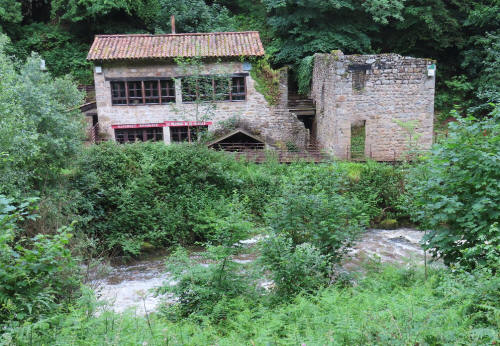 |
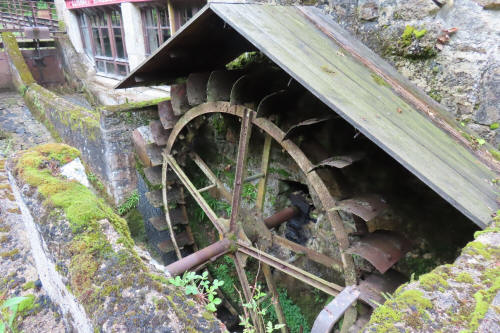 |
 |
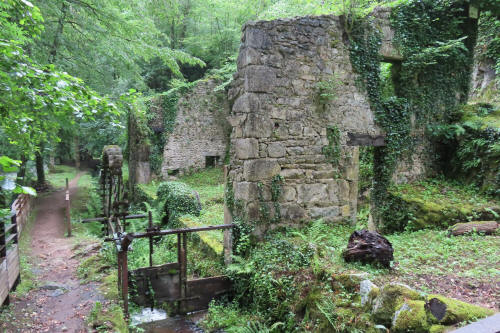 |
After staggering back up the stony track to
civilisation (and the car!) we returned to Thiers
for lunch at an excellent crêperie
before setting off to explore the Vallée
des Usines. Despite the rain we were able to
photograph some of the 19th century paper mills,
several of which were converted to cutlery
manufacture, and which crowd every inch of the river
bank.
|

The 1890 Du May factory was renovated in 2002 to
house an ‘Industrial Architectural Interpretation
Centre’ which would presumably have been very
informative but it was not open on a Thursday.
|
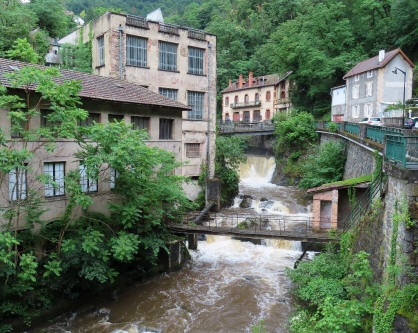
We also did not visit the Creux de l’Enfer (Hell’s
Hollow) factory (centre
of picture),
a former cutlery factory converted in 1988 into a
contemporary arts centre. |
|
The factories dependence on water power was
terminated by the construction of the Sauviat dam
and hydro-electric scheme which came into use in
1903. The arrival of electricity in Thiers enabled
a lot of the ancillary processes associated with
cutlery manufacture, such as pressing spoons from
thin metal sheets and making handles of wood, horn,
or bakelite, to be carried out on a domestic scale.
Ateliers (workshops) were added to the medieval
buildings of the upper town, and were on all
available plots of land. They are easily identified
by their large windows.
|

Factories and workshops in the Sous Saint-Jean area,
where the river is extremely narrow.
Derelict factories further downstream. Beyond these
was Usine de Crospailhat, which produced Sabatier
knives. |
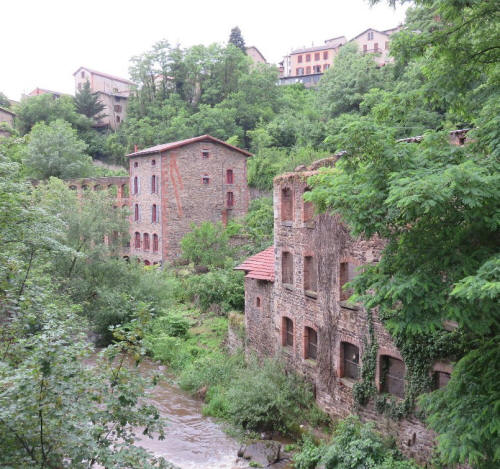 |
|
A big attempt has been made in Thiers to document
the history, technology, and buildings associated
with the cutlery industry.
A most informative book Thiers, Une Exception
Industrielle
(ISBN
2-905554-26-6)
was published in 2004; we were able to buy a copy
of it from the museum (at the bargain price of €8)
and much of this article is based on it.
Unfortunately for us it is in French!
|
